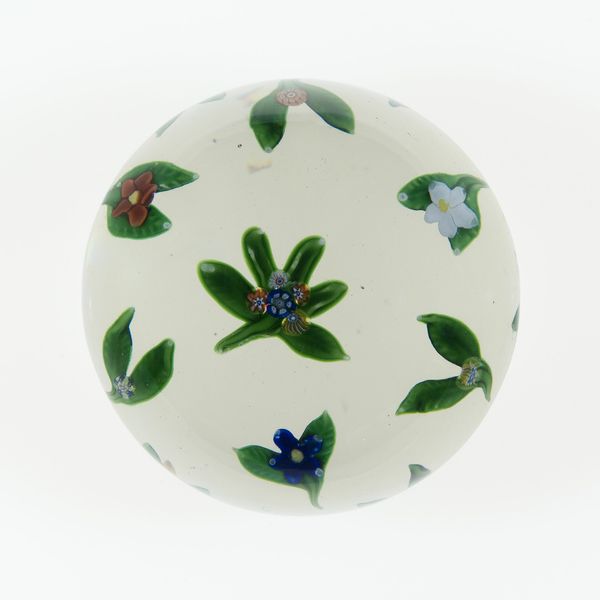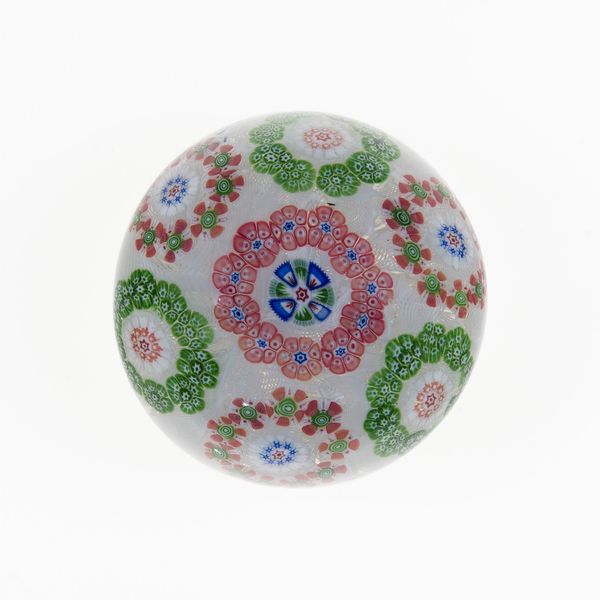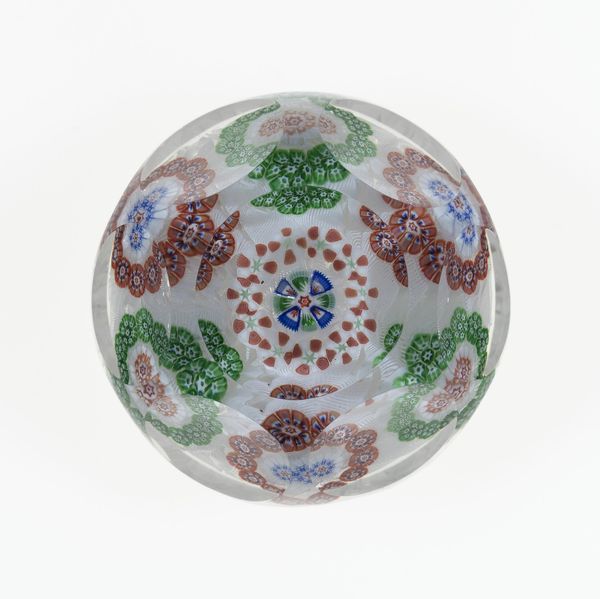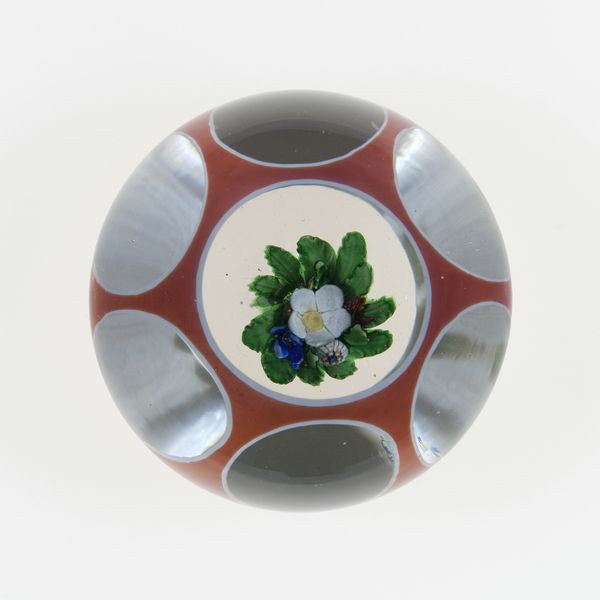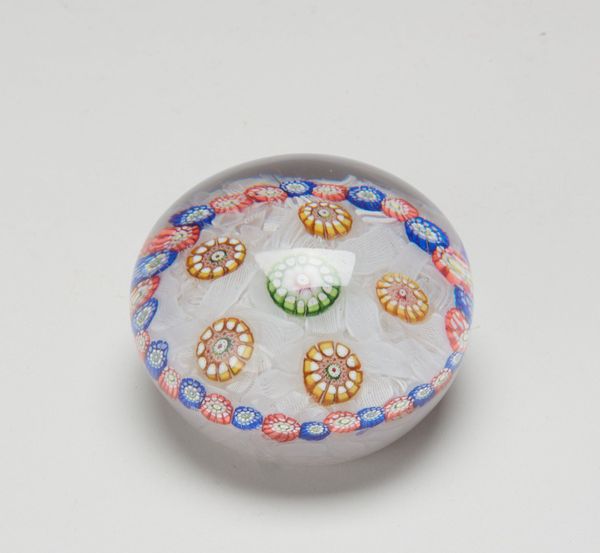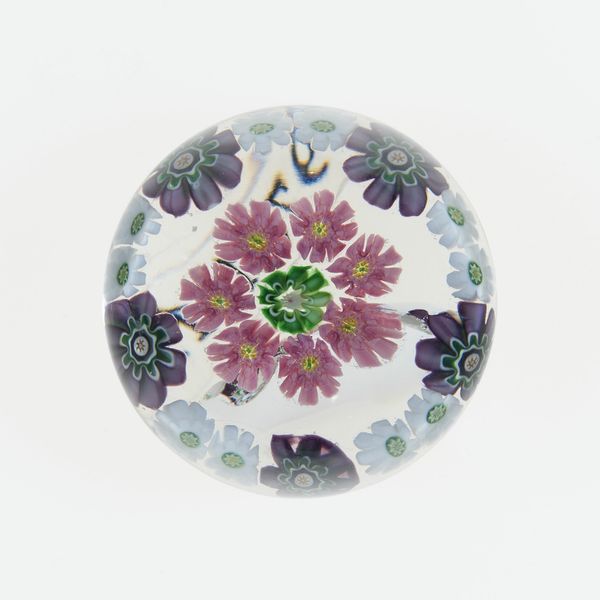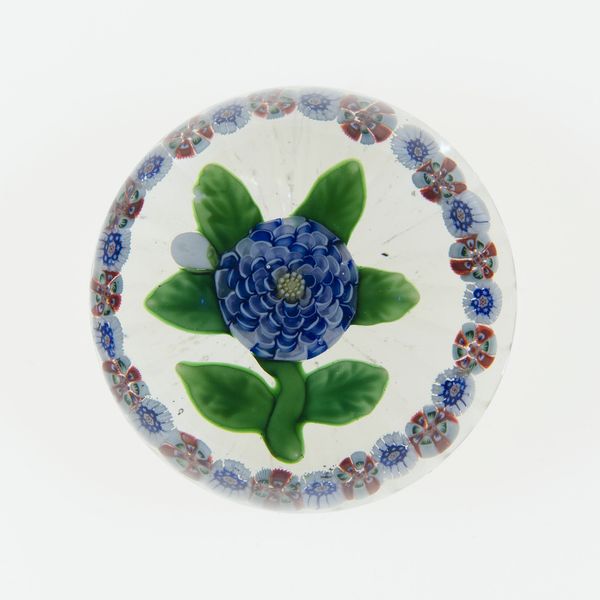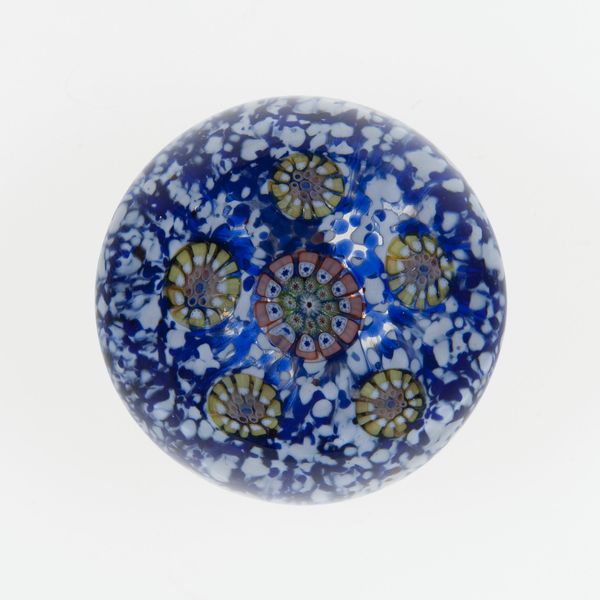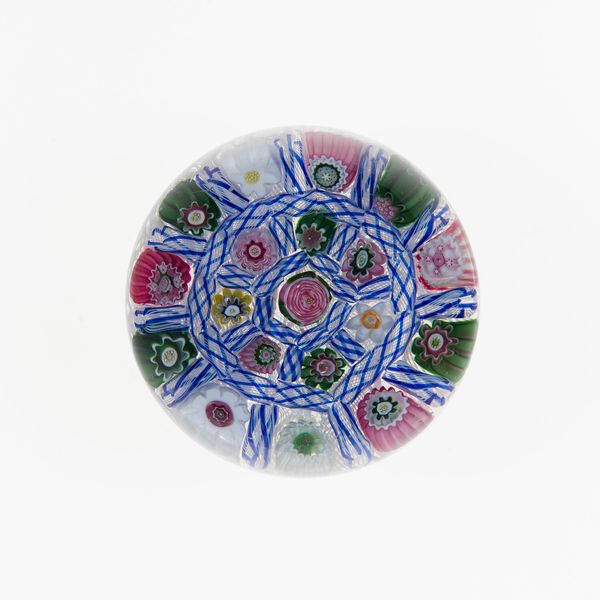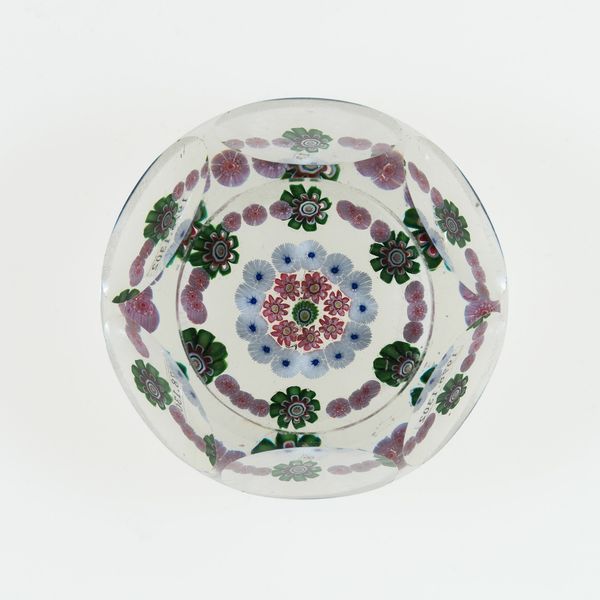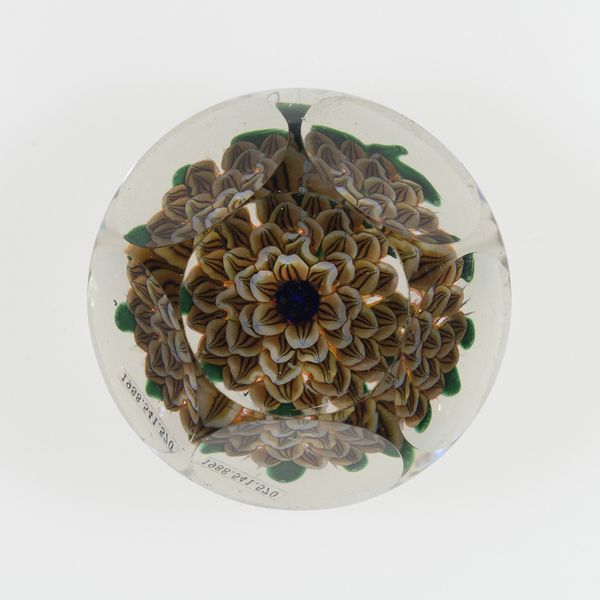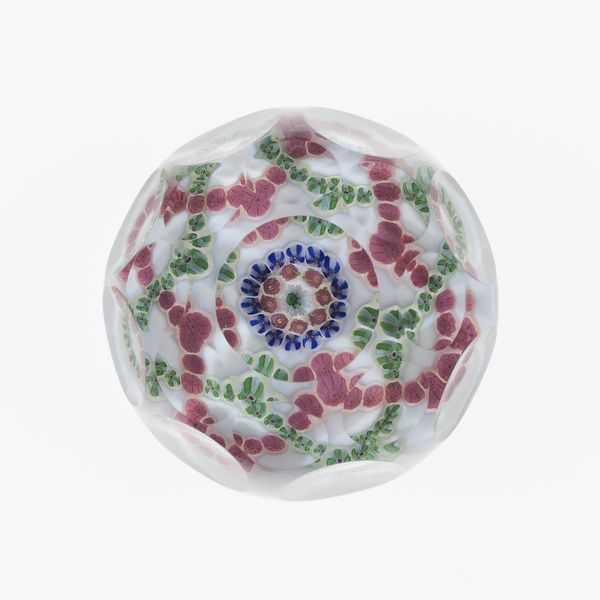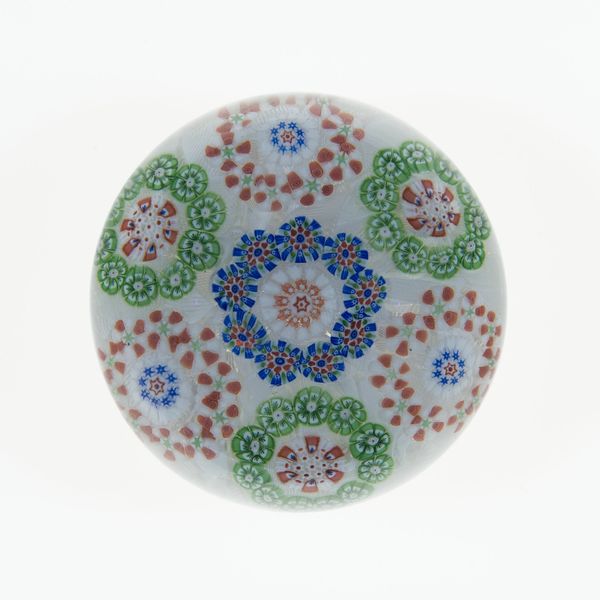
paper, glass
#
16_19th-century
#
paper
#
glass
Dimensions: 2 7/8 in.
Copyright: Public Domain
Editor: Here we have "Paperweight" from the mid-19th century, created by the Compagnie de Saint Louis. It's primarily glass, with delicate floral motifs embedded within. I’m struck by its intimacy, the way it invites close examination. What are your thoughts on its place within its historical context? Curator: It’s interesting to consider the paperweight within the rise of industrialization and its effects on decorative arts. The mid-19th century saw an explosion of these small, intricate glass objects. Factories like Compagnie de Saint Louis mass-produced them, making decorative items accessible to a wider middle class. How might we see this object relating to broader shifts in taste and social structures? Editor: So it wasn’t necessarily about unique artistic expression, but more about accessible design? I guess I had assumed something so meticulously crafted would have been exclusively for the wealthy. Curator: That’s the nuance, isn’t it? It embodies a paradox. The detail *suggests* luxury, while the mass production democratizes the ownership. What does the replication of these floral patterns signify within a culture increasingly detached from the natural world due to urbanization? Does it serve as a nostalgic reminder of a lost pastoral ideal? Editor: That’s a fascinating point. The flowers almost become a commodity themselves, little emblems of nature carefully contained within glass. Like bringing the garden inside, but in a controlled, almost artificial way. Curator: Exactly! Think about how paperweights were displayed, typically on desks, becoming a visible statement of a certain social aspiration and connection to artisanal craftsmanship, regardless of the actual production process. In the museum today, its context has changed once again. Now behind glass, viewed but untouchable. Editor: It’s so interesting to consider how the meaning shifts with each setting, from a desk ornament to a museum artifact. Curator: Yes, each display setting actively shapes the reception and our understanding of these objects. Editor: It definitely gives me a new appreciation for thinking about art objects as part of a larger social and economic picture.
Comments
No comments
Be the first to comment and join the conversation on the ultimate creative platform.
